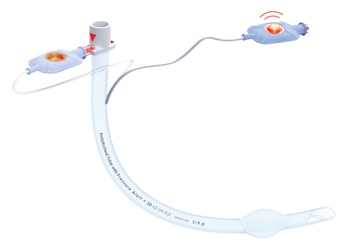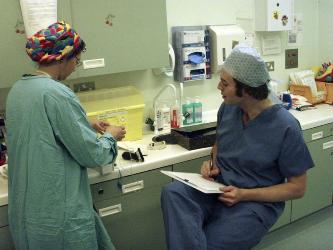Graduate’s innovative medical device design lauded by Sir James Dyson
Published: 15 September 2009
A graduate’s innovative design solution to a long-standing medical problem has won praise from one of the Britain’s foremost designers and entrepreneurs.
A Glasgow graduate’s innovative design solution to a long-standing medical problem has won praise from one of the Britain’s foremost designers and entrepreneurs – Sir James Dyson.
Jude Pullen, 26, from Cumbria, who graduated this summer with a Master of Engineering (Product Design Engineering) with Honours, beat more than 400 entries to come second in the Dyson Awards for his innovative safety device for an endotracheal tube – called Pressure Alert.
An endotracheal tube is inserted into the throat of a person who is anaesthetised to ensure a clear airway and help them breathe. An inflatable cuff in the middle of the tube seals the airway to prevent leakage but over-inflation of the cuff can cause bruising and splitting of the trachea, sometimes resulting in the need for corrective surgery.
Currently, anaesthetists gauge the pressure of the cuff by feeling a ‘pilot’ balloon, but even experts can misjudge this delicate procedure. The device invented by Jude is a small indicator integrated into the balloon which pops up when the pressure is too high, thereby prompting the operator to reduce pressure in the cuff.
Jude said: “This problem with cuff inflation has been cited by many doctors and there are a number of devices on the market which attempt to solve the problem, but they are often over-complicated or impractical to use.
“The beauty of Pressure Alert is that it’s actually very simple, is integrated into the current endotracheal tube design and requires no retrofitting. This makes sense from a manufacturing point of view – keeping costs low – but also makes it more hygienic too.”
The device also has the advantages of providing a familiar mechanism, helping to improve existing technique; giving instant warning of danger; and reducing patient recovery times and risk of injury.
In developing his idea, Jude spent several months in operating theatres talking to clinicians about the difficulties of working with endotracheal tubes before figuring out a possible solution.
Although the design was simple in principle it took months to refine the design and commence demonstration trials with the assistance of staff at Yorkhill Hospital, Glasgow.
Glasgow School of Art – which jointly teaches the degree in product design engineering with the University – provided design input for the product and funding for prototyping. Jude also received advice from both institutions on applying for a patent for his design, which is pending, and he has received help from Nesta – the National Endowment for Science, Technology and the Arts – to develop a business plan for his invention and is meeting with several blue-chip companies interested in his design.
Jude, who starts a new job with Dyson as a product designer at Malmesbury, near Bristol – a position secured before his award win – said: “It’s been great to have been recognised in the Dyson Awards but the achievements of this project are very much down to the people I worked with and the staff at Yorkhill Hospital – they were incredible.”
Jude is certainly no stranger to award wins: this year he won the £500 first prize in the undergraduate category of The Big Idea held by Student Enterprise, and was presented with the Newbery Medal as the best final year student at Glasgow School of Art.
He was the first product design engineering student to win the medal and was also awarded a commendation by the product design engineering Industrial Liaison Board for his entry into the Kennet prize for Design Innovation.
For more information contact Stuart Forsyth in the University of Glasgow Media Relations Office on 0141 330 4831 or email s.forsyth@admin.gla.ac.uk
Notes to Editors
Click here for more information on the James Dyson Awards.
First published: 15 September 2009
<< September

